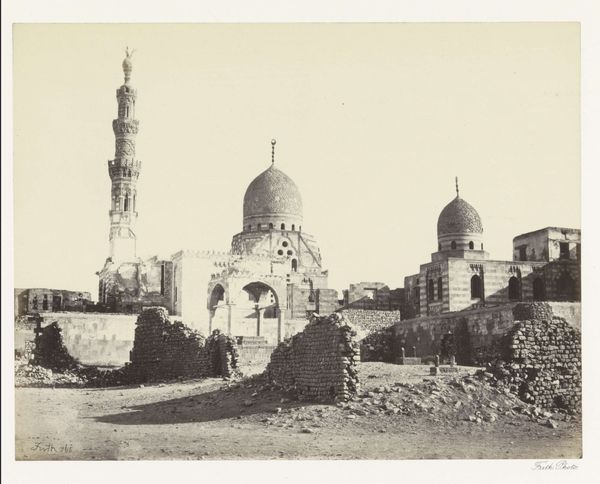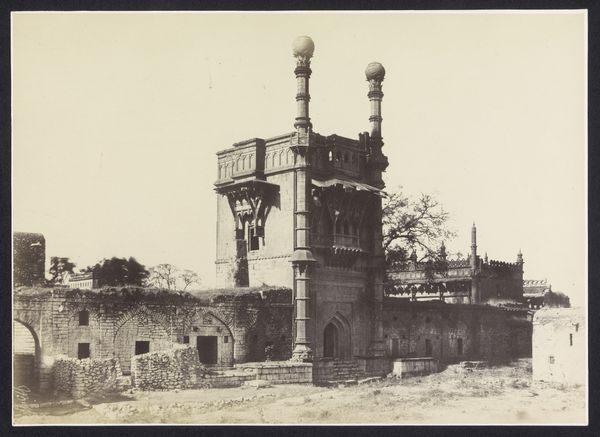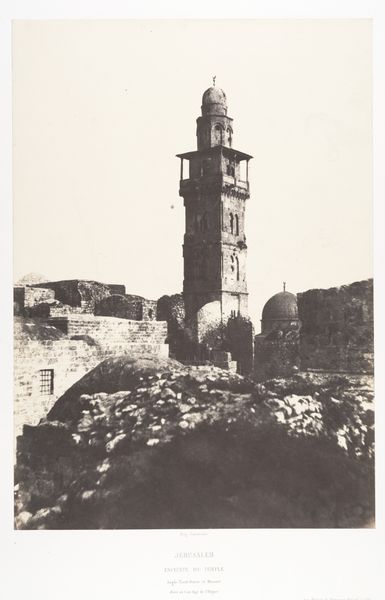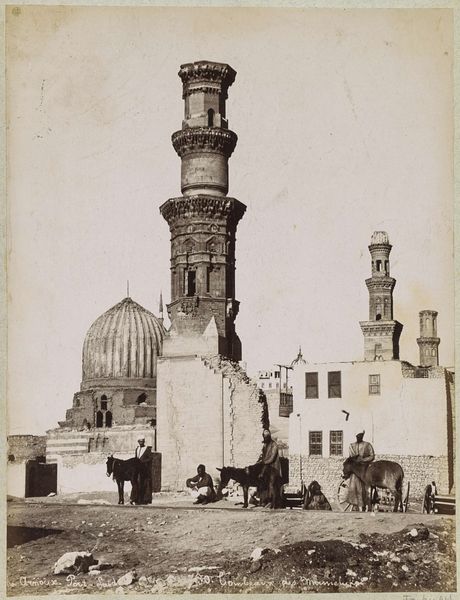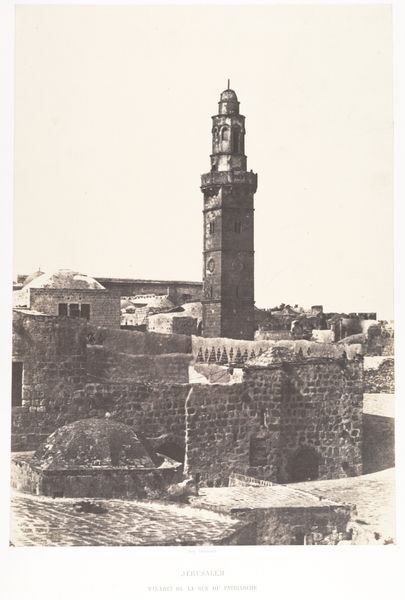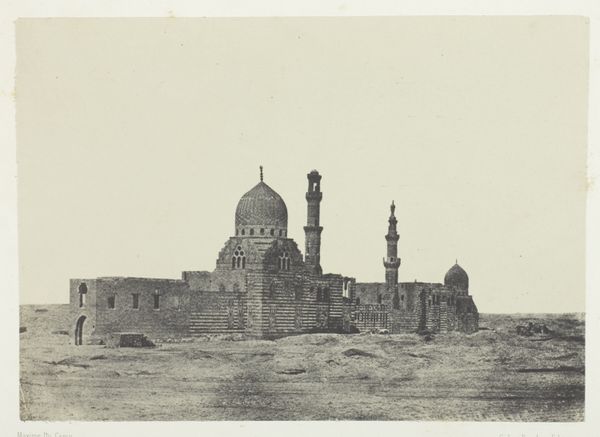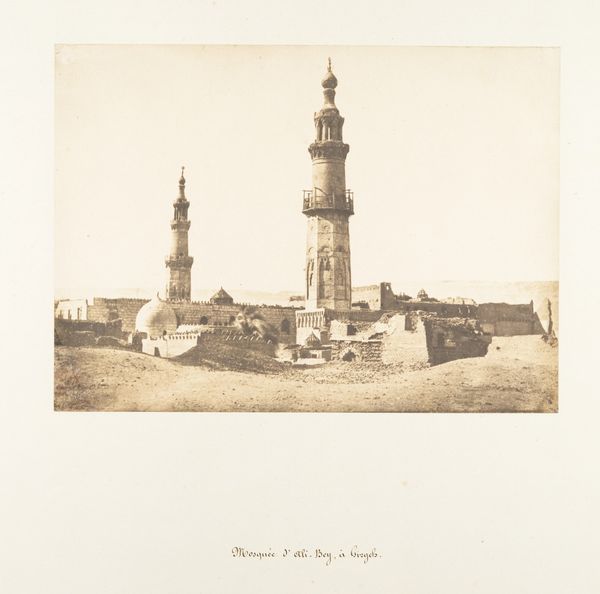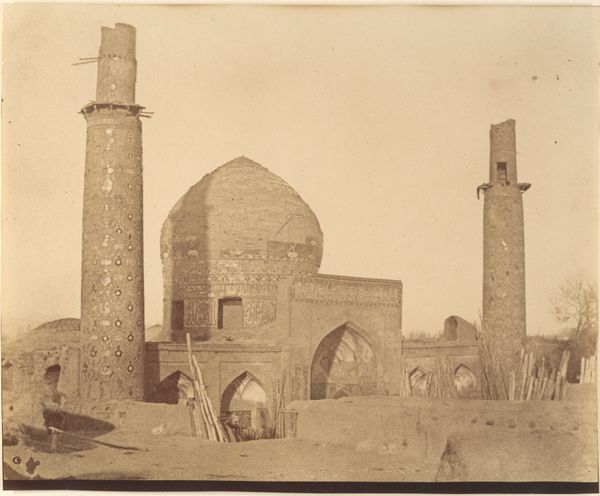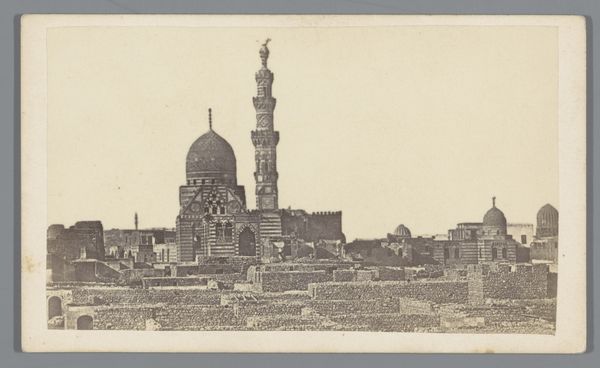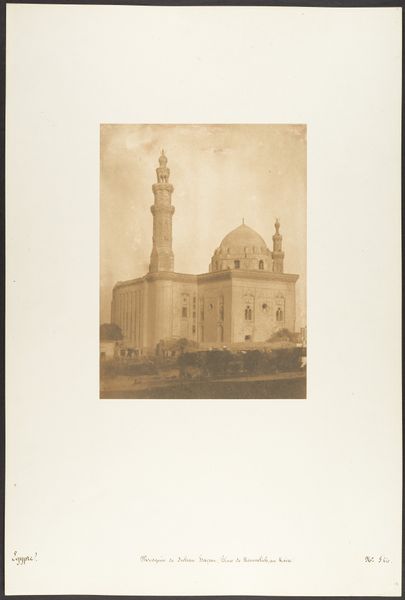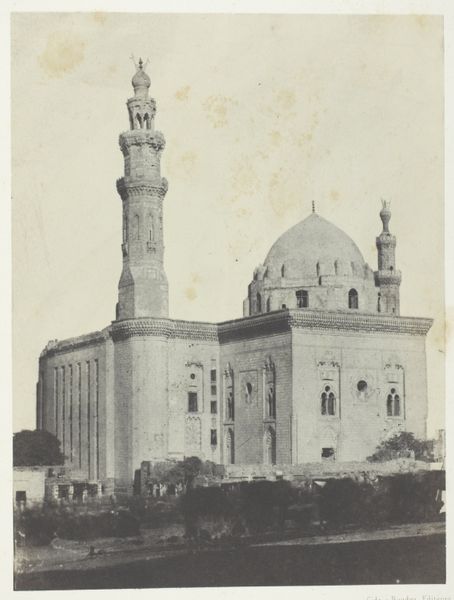
Djirdjeh, Mosquée en Ruines Sur le Bord du Nil 1851 - 1852
0:00
0:00
photography, architecture
#
landscape
#
photography
#
islamic-art
#
architecture
Dimensions: 29.7 x 25.1 cm. (11 11/16 x 9 7/8 in.)
Copyright: Public Domain
Curator: This is Félix Teynard's "Djirdjeh, Mosquée en Ruines Sur le Bord du Nil," a photograph taken between 1851 and 1852. Editor: It's haunting, this landscape. The ruinous architecture and muted tones convey such a powerful sense of time and loss. The stark, unadorned geometry focuses my attention. Curator: Indeed, the architectural elements are central. The photograph is carefully structured around the interplay of verticality—most prominently the minaret—and the horizontality established by the ruined structures. The tonal range also seems significant in articulating the structural aspects. Editor: The evident decay interests me from a material standpoint. Think of the labor that constructed this mosque, the resources extracted and shaped, only to crumble back into the earth. There's a poignant comment here on impermanence and the cyclical nature of creation and destruction that has been made manifest with material erosion. Curator: That's interesting. Teynard was trained as an engineer; do you think he conceived of the image itself as a commentary on the engineering feat inherent in its construction and eventual deconstruction? Editor: It's compelling to consider, isn’t it? Look at how he foregrounds the dilapidated stonework. He shows us not only the grand design, but also the vulnerable material reality—its disintegration under time's relentless pressure. How much was the location of Djirdjeh significant when choosing this specific structure and why at this stage of degradation? Curator: It could certainly be a factor, with perhaps allusions to a then relatively recent period of political instability. Considering that Djirdjeh—modern-day Girga—is slightly more inland, rather than directly along the Nile as the artwork's title states, this title may have rather intended to communicate a degree of exoticism more familiar to a European audience. Ultimately, however, the carefully controlled composition creates a visual rhythm through repeated forms, almost like a study in abstract shapes formed from material objects. Editor: This image offers more than just a historical record or even a comment on time; the deliberate choices in framing, material highlighting, and textural revelation lead us towards questions concerning legacy, ruin, and resilience inherent to these monuments to time. Curator: Indeed, a potent testament to enduring structural elements set against both the harsh realities and the beauty of decay.
Comments
No comments
Be the first to comment and join the conversation on the ultimate creative platform.


